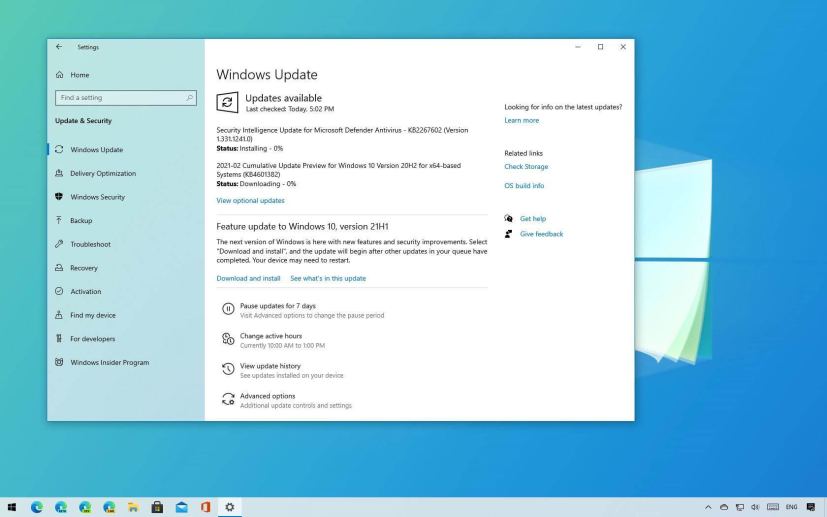Windows 10 21H1 (May 2021 Update) is rolling out slowly as an optional update starting May 18, 2021. If your computer is known to have a good upgrade experience, you will be able to manually trigger the installation through the Windows Update settings page.
However, since you are in control of installing the new version, the decision as to whether you should install it now or wait a little longer to avoid installation problems is up to you.
In this guide, we will try to determine whether you should install or skip the Windows 10 May 2021 Update.
Is it safe to install version 21H1?
The best and short answer is “Yes,” since May 18, 2021, Windows 10 version 21H1 is considered stable and safe for installation on devices running version 20H2 or 2004. However, Microsoft is currently throttling the rollout, which means that the feature update still not fully compatible with all hardware and software configurations right out of the gate.
Also, on the health dashboard website, the company has revealed some problems. For example, as part of the known issues, Microsoft is noting audio and language input problems, which have already been mitigated but not permanently fixed.
Furthermore, the answer to whether you should install this version depends on the release you have. If the computer is already running version 20H2 or 2004, you may install version 21H1 with minimal to no risks. The reason is that all these versions share the same core file system, so only a small “enablement package” is needed to apply the new version with a quick reboot that does not require reinstallation.
Using the enablement package approach significantly reduces the number of problems you may encounter using an in-place upgrade or clean installation. However, it does not resolve the problems with the feature update. Although the new operating system does not seem to have major issues thus far, you may still come across isolated problems.
On the other hand, if you have an older release, such as the November 2019 Update (version 1909), you may also be able to upgrade, but you should proceed with more caution.
Typically, going from an older to the newest release requires full reinstallation, and this process can sometimes cause unexpected problems. In addition to possible unknown and known issues resulting from the new system changes, you may also see software and compatibility problems if the computer has outdated drivers, poorly designed apps, programs designed for an old version of Windows, or use third-party security software.
Should I wait to install version 21H1?
It is never a good idea to rush the upgrade to a new version of Windows 10 since during the initial rollout, unknown bugs, errors, and compatibility problems are expected.
Once a new version releases, you will eventually receive a notification in the Windows Update settings letting you know if the feature update is ready. If you do not get the notification, you should not try to force it using the Media Creation Tool or Update Assistant because the chances of running into issues will be higher. And you may come across errors, such as “This PC can’t be upgraded to Windows 10,” “This PC can’t be upgraded to this version of Windows 10 because of a service or driver that’s not ready yet,” or similar errors.
When a new feature update becomes available, it’s always recommended to wait for at least three to four quality updates before pushing the upgrade button.
If the computer in question uses an older version of the operating system and does not have any issues, you should wait. However, you should not skip the update completely. Eventually, that specific version will be discontinued and will no longer receive maintenance updates, leading to other problems and making the device vulnerable.

